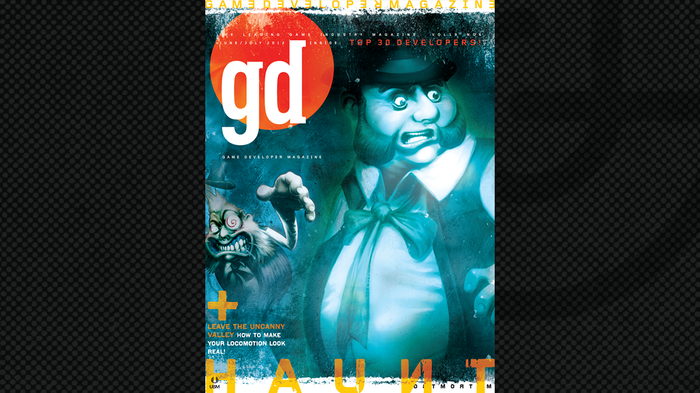
Featured Blog | This community-written post highlights the best of what the game industry has to offer. Read more like it on the Game Developer Blogs or learn how to Submit Your Own Blog Post
Why Gashapon is ultimate monetization method in Free to Play : based on microeconomics.
It's no big secret. Free to play game industry is depending most of their profit on Gashapon. And yet, no one really understands how and why that happens. I will try to explain how and why that happens.

Price determination for physical goods.
In classical economic theory, price of particular good is most important factor for consumer’s decision to whether buy that good or not. And price of particular good is determined by supply and demand curve. Which is called equilibrium price. And at supplier gets highest profit at equilibrium price.
1 unit of Amazon `Fire TV` is $99 Thus $99 is equilibrium price. And Amazon can earn maximum profit by selling 1 unit of `Fire TV` at $99. At least in theory.

[Figure I : Total Revenue at equilibrium price]
All the consumers who’s willing to pay more than $99 for `Fire TV` will buy them. Therefore total revenue from selling `Fire TV` can be calculated by $99 * number of consumers who’s willing to pay $99 or higher. This is supply and demand model from microeconomics.
Price Determination for digital goods.
Nicholas Lovell has explained excellently in his post here about price determination for digital goods and race to zero for whole digital game market.
What I will try to explain is price determination in individual F2P game as closed economy from my own experience with live service of F2P MMORPG.
Let’s assume that you've developed and released a game called `Game X` and somehow managed to draw 1,000 people to play your game. So You have 1,000 user base for your `Game X` and you have to somehow make them pay for your hard work of developing `Game X`. Your First instinct is introduce subscription model to your `Game X`. 1,000 people enjoyed playing your game thus far. So at least some of them are willing to pay small monthly fee to keep playing `Game X` right?
Korean MMORPG developers had gone through same thought process `Nexus: The Kingdom of the Winds`(1996) like this. It started as free and after some time introduced subscription model. Same goes for all the MMORPG in the world at late 1990’s and early 2000’s. They started as free (or you can play free until level X) and introduced subscription model later.
At first it worked. Many of users at free phase left, but enough paying user remained to keep business going. But as competition grows, subscription model didn’t work anymore. There are two problems with subscription model.
Problem 1 : conversion rate of free user to paying user is lessened and lessened. Because when introducing subscription model after some free play period, users simply choose to play another game because there are tons of other free game to play.
Problem 2 : This was bigger problem. Even though we managed to acquire great number of paying user, they will keep shrunk. Because getting new user was next to impossible (they were going for newly released game) and acquired paying user were meant to decreases over time for natural causes(grow older, married, getting a job, etc….)

[Figure II : Subscription model revenue shrinking over time]
Digital product has negligible production cost, there is no supply curve in supply demand model for Free to Play games.
Figure II shows what happened with subscription model MMORPG. At a P1 price your `Game X` had Revenue1, which was satisfying and enough to pay for the maintenance cost of `Game X`. But as time goes by user base has shrunken and you have Revenue2, which is not enough to pay the maintenance cost and you are not happy at all.
At this phase you might think that lowering subscription price for `Game X` will increase your revenue. But as Figure III shows that whatever the price is, you can never earn as much as Revenue1.

[Figure III : Revenue from different subscription prices]
Fundamental reason why revenue decrease is shrunken user base. But it is next to impossible to increase user base due to intense competition. What will you do? Forget the `Game X` and move on to the next project `Game X2`? That is one option. But there is more safer and cost effective solution. That solution is called `Free to Play`.
Price Determination for Free to Play Games.

[Figure IV : Revenue from Free To Play]
By selling different product at different prices, you can earn even bigger revenue than `Revenue1` with smaller user base. (Sum of red areas in Figure IV). So you decided to adopt F2P model for `Game X` and not long after, you found there is extra benefits of introducing F2P model.
For subscription games, subscription price is acting as entrance wall for new users. But for F2P games, there is literally no entrance wall. With proper marketing, user base could grow even with aged game. Games like `Maplestory`, `Dungeon & Fighter` was actually growing long after release. Not just in terms of profit but also in cultural influence and user base.
But that's another story at another time. Let’s return to our `Game X` with shrinking user base. You introduced F2P model and you were able to earn revenue closer to your prime time revenue of `Revenue1`…… only for a short time. After sometime you realize that production cost for F2P merchandise is not negligible at all. To be profitable with F2P model, you need different merchandise at different prices. Creating those requires many peoples hard work. Say, that you are selling horses for `Game X` in your shelve you will have $19.99 for premium horse, $9.99 for average horse, $2.99 for crappy horse. you will have to create such merchandise for every month. What will you sell after horses? Unicorn? Griffin? Dragons? Commercially available idea runs out really fast and it becomes impossible to balancing all those merchandises.
There is easy and simple solution for this problem. Actually all the RPG game have this solution at the very core of game design itself. Japanese named this solution as `Gashapon`. Users pay X amount of money/gold/time and they get the reward based on fixed probability table. Gashapon can cover all the price range with single product, encourages impulsive purchase. And most importantly, It is highly cost effective. Lottos sells tens of millions dollars for every week without any need of developing new product. If `Game X` has stable economy, you can make Gashapon with existed resources within the game itself.
Now you packed Gashapon with in-game resources and put it on your shelve with $0.99 price tag. Any paying user who’s willing to pay more than $0.99 they will buy Gashapon until their maximum spending capacity. Single merchandise with negligible development cost can cover whole red areas in `Figure IV`. And you can do it over and over again for every month or so. Users got tired of Gashapon? Don’t worry, putting balance breaking item inside Gashapon as a bait and little bit of marketing tweak will persuade them to buy again and again. And not long after you company account will be filled with hundreds millions of dollars.
You may feel something wrong here. Isn’t Gashapon is exploiting psychological weaknesses regarding gambling behavior? What about providing actual fun and value for users? Do our users get what they deserve for their money?
Well… that’s the capitalism. I guess.
Read more about:
Featured BlogsAbout the Author
You May Also Like









